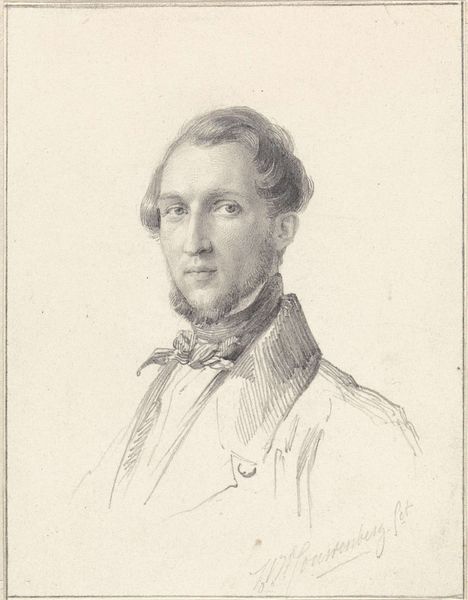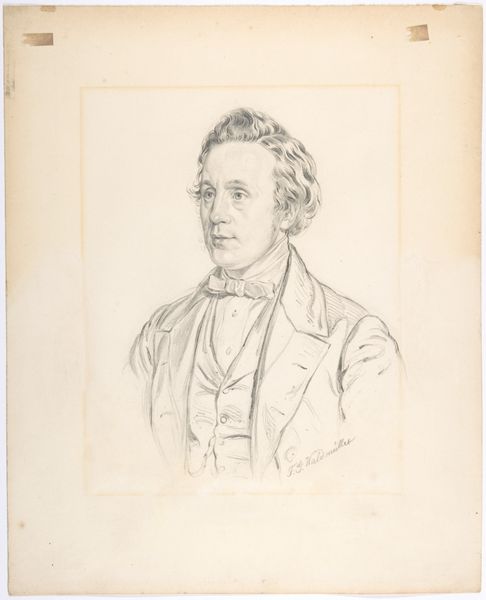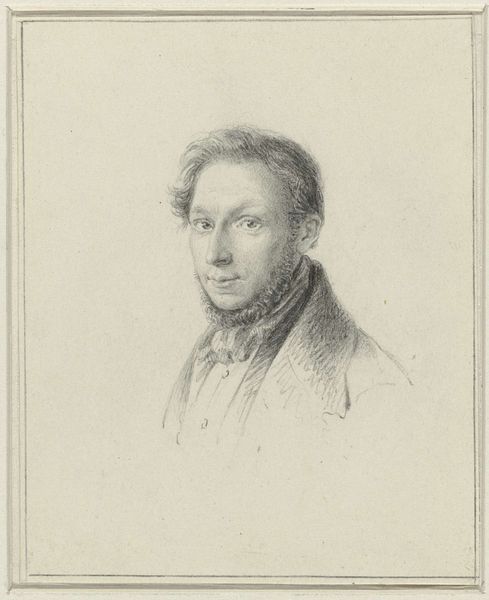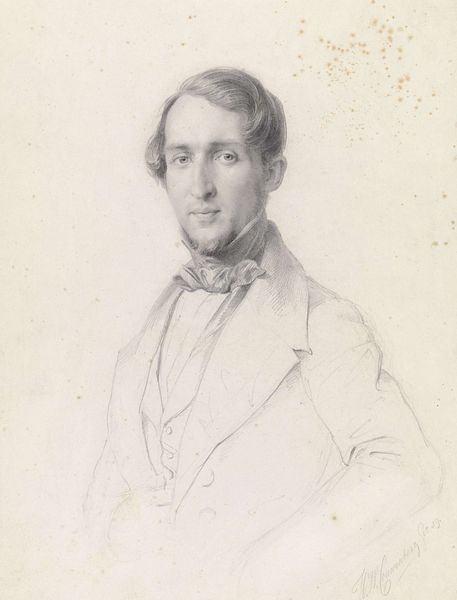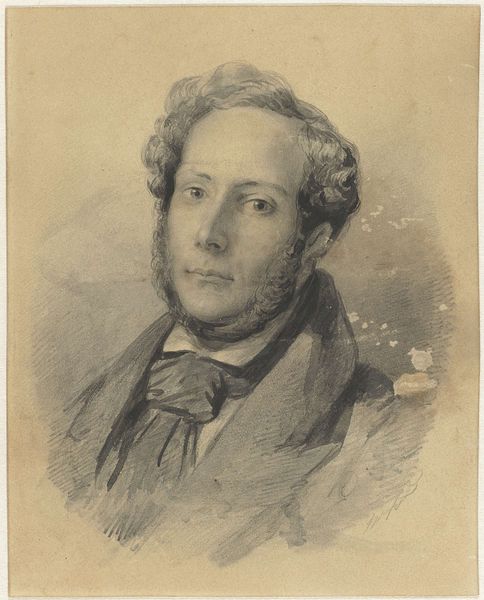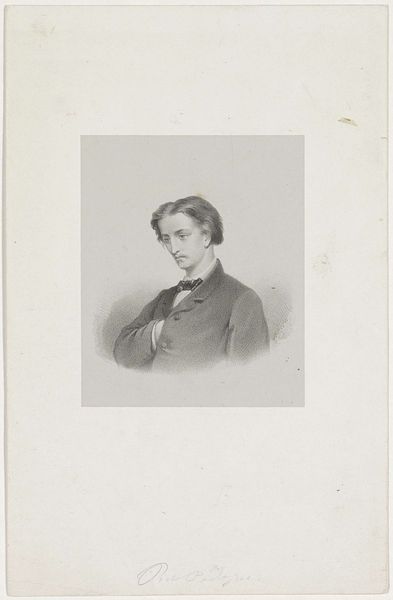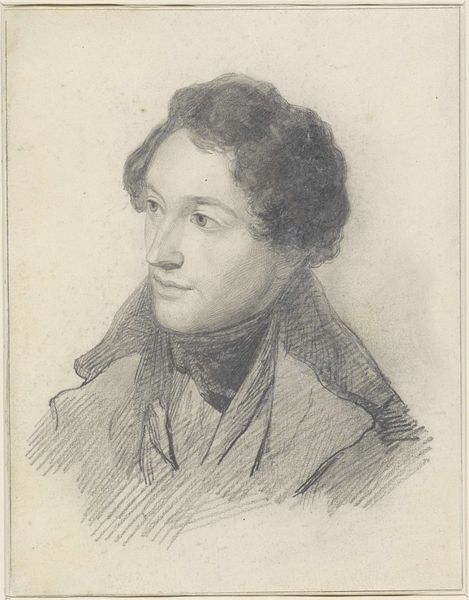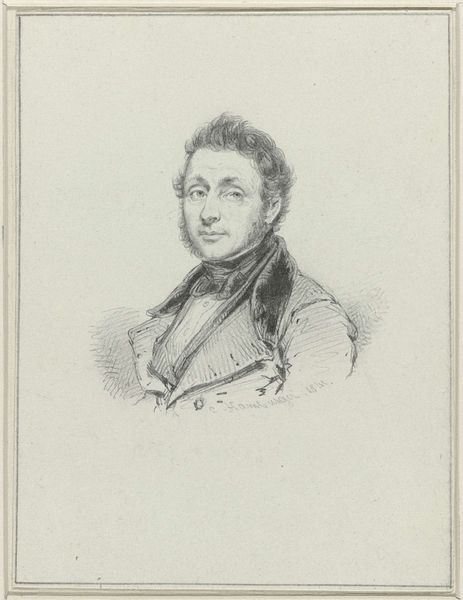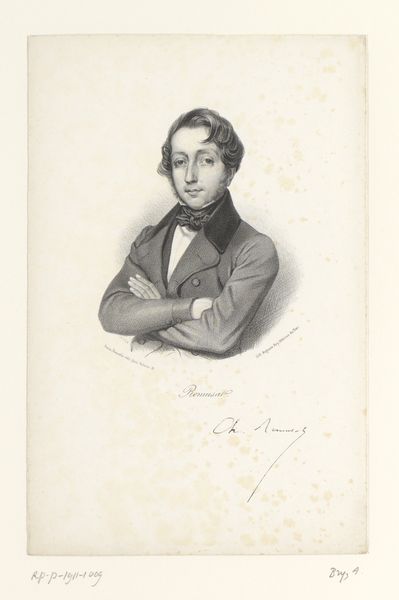
Portret van Petrus Augustus de Génestet, zittend met een boek op schoot 1853
0:00
0:00
antoniejohannesgroeneveldt
Rijksmuseum
drawing, pencil, graphite
#
portrait
#
pencil drawn
#
drawing
#
charcoal drawing
#
pencil drawing
#
pencil
#
graphite
#
portrait drawing
#
realism
Dimensions: height 295 mm, width 225 mm
Copyright: Rijks Museum: Open Domain
Editor: This is Antonie Johannes Groeneveldt’s 1853 pencil drawing, “Portret van Petrus Augustus de Génestet, zittend met een boek op schoot," currently housed at the Rijksmuseum. It has such a quiet, introspective mood to it. What draws your eye when you look at this portrait? Curator: Immediately, I'm struck by how this image embodies the complex relationship between masculinity and intellect in the 19th century. Consider the sitter, a man of obvious learning, presented not in a position of power or action, but in quiet contemplation. The book becomes a symbol – but of what? Is it a tool of empowerment, or does it signify a retreat from the world, especially given the societal pressures on men during this era? Editor: That’s a perspective I hadn’t considered. I just saw him as a scholar. Is it unusual to depict men with this vulnerability? Curator: It’s not necessarily *unusual*, but it is deliberate. Realism in portraiture served multiple purposes. While it could depict a sitter accurately, it also had the power to subtly subvert dominant narratives. Groeneveldt’s choice of medium – drawing, with its inherent softness and intimacy – adds another layer. Think about the contrast: the subject is a man of stature and the work captures him in a private moment. Do you see how these decisions could challenge the rigid expectations placed upon men at the time? Editor: I do, actually! The softness of the graphite does create a feeling of intimacy that I hadn’t noticed before. It's interesting how those artistic choices can suggest something deeper. Curator: Exactly! It invites us to consider the internal lives of historical figures, moving beyond surface-level understandings of power and identity. What do you think the implications of presenting historical figures this way? Editor: I think it forces us to question what we assume about the past, especially the roles and expectations placed on people because of their identity. This portrait definitely adds a layer of complexity. Curator: It absolutely does. This kind of approach highlights how art serves as a powerful tool for reinterpreting history and challenging societal norms.
Comments
No comments
Be the first to comment and join the conversation on the ultimate creative platform.

